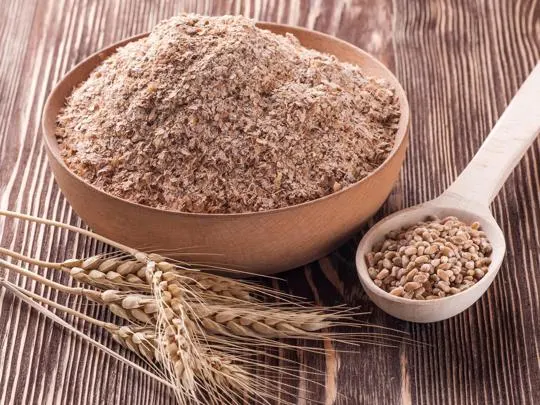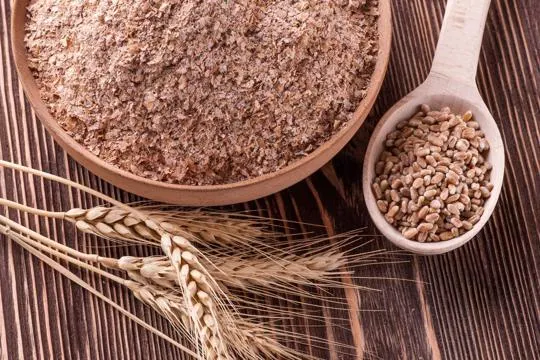In the great cereal grain showdown, oat bran and wheat bran are two contenders reaching for the breakfast crown.
Did you know oat bran packs a punch in fiber content? While wheat bran isn’t slouching behind, with its rich mineral makeup.
Sure, we’ve all grabbed a box off the shelf, scanning the labels, trying to pretend we know what’s best for our gut.
Yet, here we are, still puzzled over which bran reigns supreme. We’ve been there, flipping a coin, maybe, to decide our breakfast fate.
It’s not just about which is better. It’s about knowing what each brings to the breakfast table.
And no, we’re not turning into a bran encyclopedia. We’re just here to share the scoop, straight up, no fluff.
What is Oat Bran?

Oat bran is not only nutritious, but it comes from the outer layer of oat groats.
It contains the edible part of oats plus the bran layer, which is full of fiber and essential nutrients.
People use it in recipes and food products because of its potential health benefits.
This ingredient is high in fiber.
Plus, it contains vitamins, minerals, iron, magnesium, and zinc.
That’s why it’s great for people who want to add these nutrients to their diet.
Oat bran has been connected to many advantages, including improved digestion, reduced cholesterol, and better blood sugar control.
Oat bran can also make dishes tastier and more textured.
You can put it on yogurt or add it to smoothies for extra fiber.
It’s also good in baked goods like muffins or bread.
In conclusion, adding oat bran to your diet is an easy way to increase your fiber intake and its many benefits.
So if you’re baking muffins or looking for a way to boost your fiber for breakfast, consider using oat bran.
What is Wheat Bran?

Wheat bran is the outer layer of the wheat kernel that gets removed during milling.
It’s packed with fiber, vitamins, and minerals.
Plus, its coarse texture and nutty flavor make it a crunchy addition to cereals, baked goods, and even smoothies.
It’s not just tasty – wheat bran also has many health benefits.
It has insoluble fiber which helps digestion and prevents constipation.
It’s a great source of minerals like iron, magnesium, and selenium.
Plus, it may help lower cholesterol, reduce heart disease risk, and aid weight management by promoting satiety.
But, people with gluten sensitivity or celiac disease may have reactions to wheat products.
In such cases, oat bran is a safer option.
Overall, wheat bran can be a great way to increase your fiber intake and get lots of health benefits.
Sprinkle it over yogurt, or add it to your favorite recipes – it’ll make your meals more delicious and nutritious.
Differences Between Oat Bran and Wheat Bran

Oat bran and wheat bran may be alike, but they differ.
Although both oat bran and wheat bran offer many health benefits, their nutritional profiles differ.
So, if you prefer the sweetness of oat bran or the nuttiness of wheat bran, adding either to your diet will give you important nutrients and support your digestive health.
Source and Processing
Oat bran and wheat bran vary in terms of origin and processing.
Oat bran comes from oats.
Wheat bran is obtained from wheat.
To make oat bran, the outer husk is taken off and then it is ground into a powder.
Wheat bran is made by milling the wheat grain – it has a coarser texture than oat bran.
This affects the taste, texture and nutrition of oat bran and wheat bran.
Nutritional Composition
Oat bran and wheat bran vary in their nutrients.
Oat bran has lots of fiber, with both soluble and insoluble fiber.
This helps digestion and lowers bad cholesterol.
Wheat bran has more insoluble fiber, which helps with regular bowel movements and constipation.
Both oat and wheat bran are low in fat and calories; ideal for weight management.
Flavor and Texture
Oat bran and wheat bran differ in flavor and texture.
Oat bran has a nutty taste with a crunchy chewiness, whereas wheat bran has a milder flavor and a smoother texture.
Oat bran’s flavor is unique – earthy and sweet.
It adds depth to various recipes like muffins, bread and cereals.
Its chewy consistency offers an enjoyable contrast to softer ingredients, making it ideal for crunchy granola bars and yogurt bowls.
Wheat bran has a milder taste, which makes it great for recipes without overpowering other ingredients.
Plus, its texture is smoother and finer, perfect for doughs and batters.
Both types of bran provide dietary fiber and vitamins and minerals.
Understanding their flavors and textures helps you pick the best ingredients for your cooking.
Try them to experience a delicious balance of taste and texture.
Uses and Culinary Applications
Oat bran and wheat bran are two popular types of bran.
They have different uses and culinary applications.
Oat bran is great for breakfast foods, like oatmeal, granola bars, and muffins.
Wheat bran is crunchy and nutty.
It’s often used as a topping for cereals or yogurt.
It can even replace breadcrumbs in meatballs or meatloaf.
Both brans offer health benefits and are versatile in the kitchen.
Oat bran has cholesterol-lowering effects due to its soluble fiber.
Wheat bran has insoluble fiber which aids digestion.
It also helps scrub the intestines.
Both brans can be used as an alternative ingredient for gluten-free diets.
Oat bran is naturally gluten-free, but cross-contamination may occur.
Wheat bran contains gluten, but some people may tolerate small amounts.
Always consult with a medical professional if needed.
Oat bran and wheat bran are great for adding fiber and nutritional value.
They bring a burst of creativity to enhance the flavor of favorite dishes.
Similarities Between Oat Bran and Wheat Bran

Oat bran and wheat bran are similar in many ways.
Both provide dietary fiber, which helps digestion and lowers cholesterol.
Plus, their high fiber content keeps you feeling full for longer.
However, oat bran has an extra benefit.
It has a type of soluble fiber called beta-glucan, which is linked to better immune function and less inflammation.
Wheat bran is unique too.
It contains more B vitamins than oat bran.
This helps with energy production.
So, both brans have excellent nutritional benefits.
Adding them to your diet is a smart choice.
Health Benefits of Oat Bran and Wheat Bran
Oat and wheat bran can both bring many health advantages.
They are loaded with fiber, which helps with digestion and keeps your weight in check.
Plus, they can decrease cholesterol levels and reduce the danger of heart illness.
Both brans also have essential vitamins and minerals, like iron and magnesium, for optimal health.
Moreover, oat bran has beta-glucan, a type of fiber that can improve blood sugar control.
Wheat bran, on the other hand, has insoluble fiber, which helps with regularity and prevents constipation.
Adding either oat or wheat bran to your diet can lead to improved health and wellbeing.
Incorporating Oat Bran and Wheat Bran in Your Diet
Incorporating oat and wheat bran in your diet can be beneficial.
Both types offer unique nutritional benefits.
Oat bran has soluble fiber which lowers cholesterol, regulates blood sugar, and promotes healthy digestion.
It also has antioxidants that protect against oxidative stress and inflammation.
Wheat bran is made from the outer shell of wheat grains.
It has insoluble fiber which helps with regular bowel movements and prevents constipation.
It also contains magnesium, zinc, and B vitamins.
When adding oat bran to your diet, it can be put in yogurt, smoothies, or used as a substitute for breadcrumbs.
Wheat bran can be added to baking recipes, used as a topping for soups or stews.
Both should be part of a balanced diet and drinking plenty of water is essential.
Conclusion
Oat bran and wheat bran might appear alike, yet they have distinct differences.
Oat bran is known for its high fiber and cholesterol-lowering qualities.
Wheat bran, however, is abundant in vitamins and minerals such as iron, magnesium, and zinc.
Both can be a great addition to a healthy diet depending on one’s needs.
When it comes to flavor and texture, oat bran is milder and much more agreeable compared to wheat bran.
Wheat bran has a slightly nutty flavor and a coarser texture which some people may find difficult to incorporate into their dishes.

Leave a comment